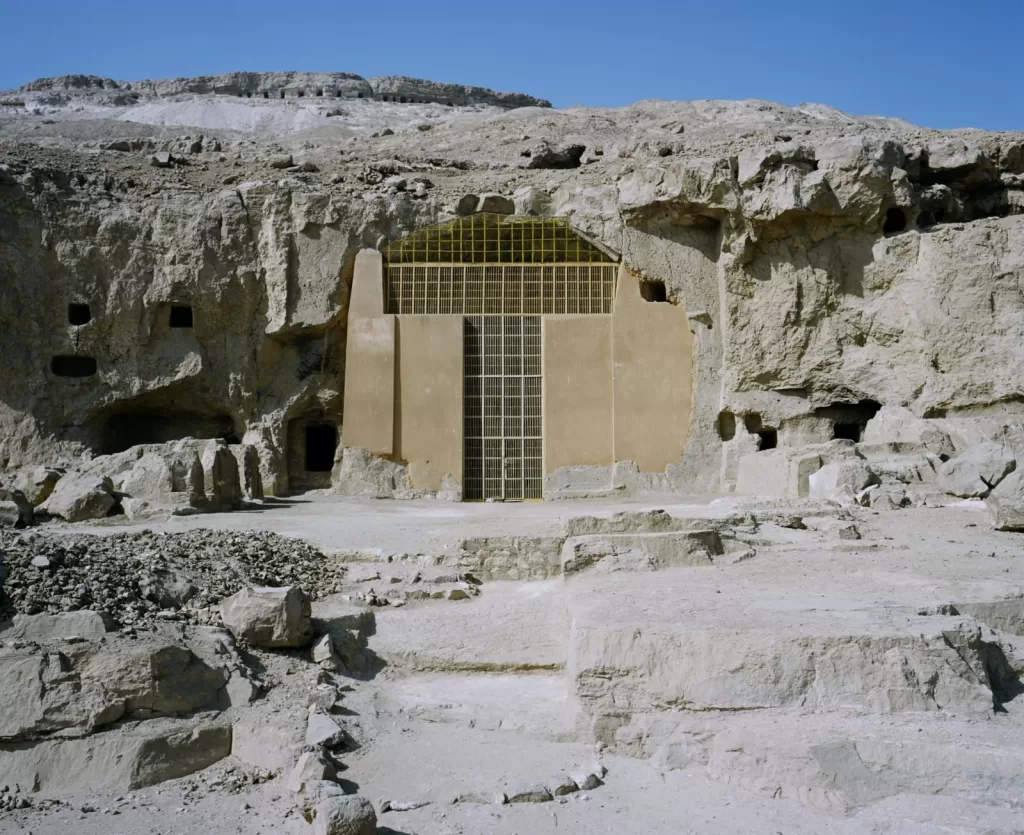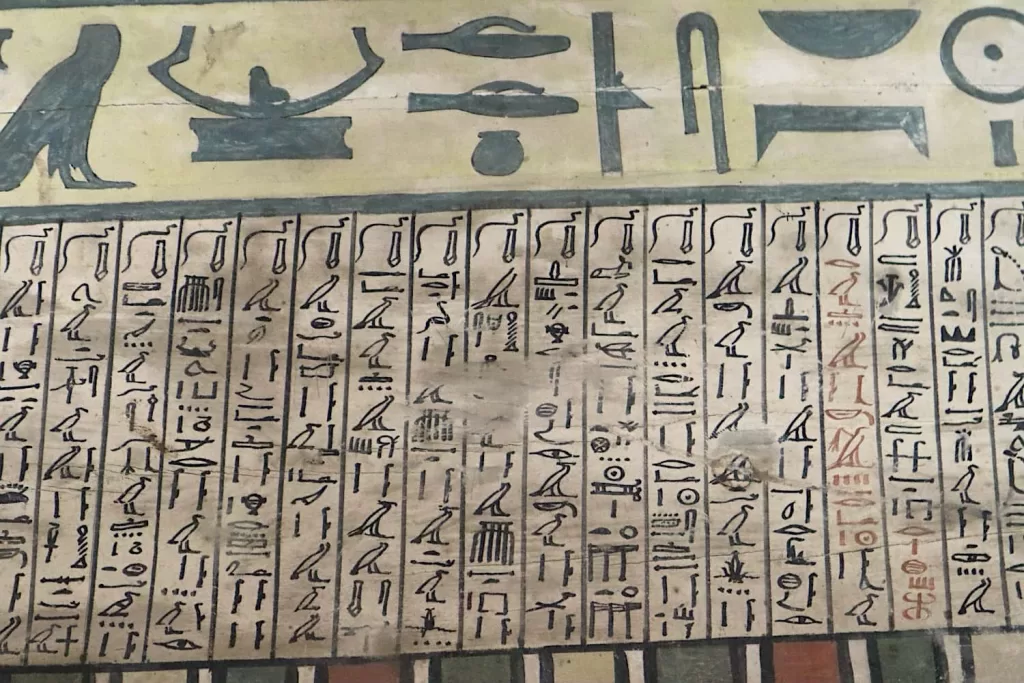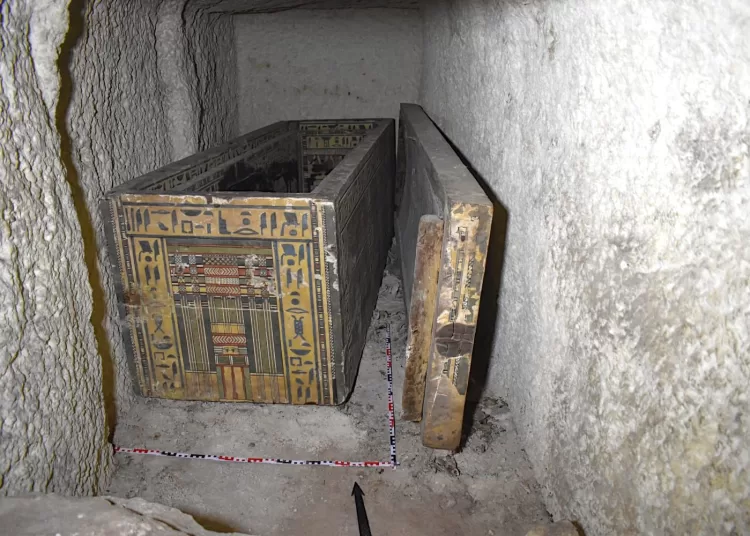In the sands of Egypt, a treasure trove of history has been unveiled. The joint Egyptian-German archaeological mission, spearheaded by the universities of Sohag and Berlin, has stumbled upon a remarkable find — the burial chamber of a young woman, once the daughter of a powerful governor in the Assiut region in Upper Egypt during the reign of King Senusret I, over 3,900 years ago.
As the dust settled in the largest non-royal tomb of its era, the mission beheld an astonishing sight, testifying to the significance of this regional ruler’s final resting place. Hidden 15 metres below the desert’s surface, to the north of the governor’s own tomb, lay a chamber whispering the secrets of millennia past.
This subterranean sanctuary cradled two exquisite coffins, intricately etched with sacred texts chronicling the soul’s journey into the afterlife. The coffins — one encased within the other — measure 2.30 metres and 2.62 metres and stand as stunning tributes to the artistry and beliefs of ancient Egyptian civilisation. Alongside these, relics such as a canopic jar box and carved wooden statues emerged from the sands, silent sentinels of history.
Yet, the serene repose once bestowed upon the governor’s daughter had met with the tumult of an unwelcome intrusion. In antiquity, tomb robbers had breached her sanctuary, disrupting her eternal rest. Her mummy had been ransacked, and her canopic jars shattered — fragments of both hauntingly silent yet eloquent in their tale of ancient robbery.
Through the meticulous examination of her remains, the mission found that the daughter had not seen the age of forty, and upon her bones lay the shadow of a birth defect in her foot, hinting at the challenges she may have faced in her fleeting life.
Minister of Tourism and Antiquities, Sherif Fathy, lauded the meticulous endeavours of this archaeological mission. He said that the ministry stands ready to bolster these explorations.
Ongoing cleaning efforts and scientific analysis of the bones will continue to shed light on this ruler, his daughter, and the historical period they inhabited, the ministry said in a statement.









Discussion about this post